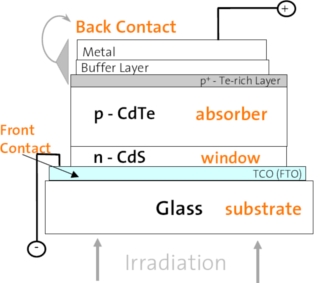-

-
Courses
Find courses by:
Collections
Cross-Disciplinary Topic Lists
- About
- Donate
- Featured Sites
This is an archived course. A more recent version may be available at ocw.mit.edu.

Solar cells are engineered to use different materials, form factors, and manufacturing techniques, striking a balance between performance and cost across various applications. Thin films are one promising technology. (Courtesy M. Terheggen. Used with permission.)
Prof. Tonio Buonassisi
2.626
Fall 2008
Graduate
In this course students will learn how solar cells convert light into electricity, how solar cells are manufactured, how solar cells are evaluated, what technologies are currently on the market, and how to evaluate the risk and potential of existing and emerging solar cell technologies. We examine the potential & drawbacks of currently manufactured technologies (single- and multi-crystalline silicon, micromorph tandem cells, CdTe, CIGS, CPV, PVT), as well as pre-commercial technologies (organics, biomimetic, organic/inorganic hybrid, and nanostructure-based solar cells). Hands-on laboratory sessions explore how a solar cell works in practice. We scrutinize what limits solar cell performance and cost, and the major hurdles — technological, economic, and political — towards widespread substitution of fossil fuels. Students will apply this knowledge towards developing and critiquing a solar energy technology prospectus.
Buonassisi, Tonio. 2.626 Fundamentals of Photovoltaics, Fall 2008. (MIT OpenCourseWare: Massachusetts Institute of Technology), https://ocw.mit.edu/courses/mechanical-engineering/2-626-fundamentals-of-photovoltaics-fall-2008 (Accessed). License: Creative Commons BY-NC-SA
For more information about using these materials and the Creative Commons license, see our Terms of Use.
